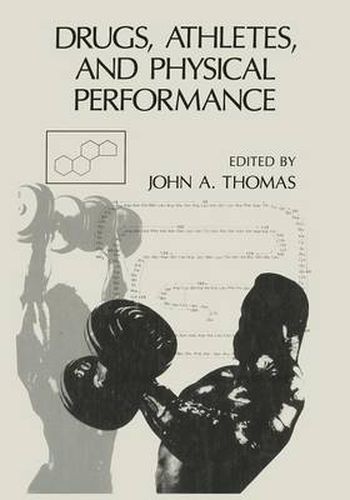Readings Newsletter
Become a Readings Member to make your shopping experience even easier.
Sign in or sign up for free!
You’re not far away from qualifying for FREE standard shipping within Australia
You’ve qualified for FREE standard shipping within Australia
The cart is loading…






This title is printed to order. This book may have been self-published. If so, we cannot guarantee the quality of the content. In the main most books will have gone through the editing process however some may not. We therefore suggest that you be aware of this before ordering this book. If in doubt check either the author or publisher’s details as we are unable to accept any returns unless they are faulty. Please contact us if you have any questions.
The use of performance-enhancing substances by athletes is not a contemporary epi demic. In fact, athletes purportedly resorted to such measures over 2000 years ago. Even at the ancient olympic games, athletes employed special diets and concoctions to enhance their performance. In ancient Rome and ancient Egypt, gladiators and athletes ingested various potions in order to improve their physical endurance. In most in stances, such early examples of substance abuse by athletes involved relatively in nocuous chemicals, and one might presume that any enhanced performance could be attributed largely to a placebo effect. Nowadays, aside from the ethical issues, these performance-enhancing substances are far more potent and hence toxic to the body. The many performance-enhancing chemicals, drugs, and hormones exert a variety of complex pharmacological actions, but all are meant in some fashion to improve phys ical ability. Their pharmacological effects ranges from imprOVed muscle strength, as in the case of anabolic steroids and growth hormone, to central nervous system stimula tion, as in the case of caffeine or amphetamine. Analgesics or other pain-killing drugs may also be used to suppress an existing injury in order that the athlete may compete.
$9.00 standard shipping within Australia
FREE standard shipping within Australia for orders over $100.00
Express & International shipping calculated at checkout
This title is printed to order. This book may have been self-published. If so, we cannot guarantee the quality of the content. In the main most books will have gone through the editing process however some may not. We therefore suggest that you be aware of this before ordering this book. If in doubt check either the author or publisher’s details as we are unable to accept any returns unless they are faulty. Please contact us if you have any questions.
The use of performance-enhancing substances by athletes is not a contemporary epi demic. In fact, athletes purportedly resorted to such measures over 2000 years ago. Even at the ancient olympic games, athletes employed special diets and concoctions to enhance their performance. In ancient Rome and ancient Egypt, gladiators and athletes ingested various potions in order to improve their physical endurance. In most in stances, such early examples of substance abuse by athletes involved relatively in nocuous chemicals, and one might presume that any enhanced performance could be attributed largely to a placebo effect. Nowadays, aside from the ethical issues, these performance-enhancing substances are far more potent and hence toxic to the body. The many performance-enhancing chemicals, drugs, and hormones exert a variety of complex pharmacological actions, but all are meant in some fashion to improve phys ical ability. Their pharmacological effects ranges from imprOVed muscle strength, as in the case of anabolic steroids and growth hormone, to central nervous system stimula tion, as in the case of caffeine or amphetamine. Analgesics or other pain-killing drugs may also be used to suppress an existing injury in order that the athlete may compete.